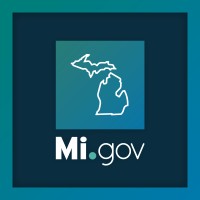Company Cyber Security Posture
NANA
NA Company Details
NA
NA
NA
NA
NA
NA
Scan still pending
NA
NA
Between 200 and 800
This score is AI-generated and less favored by cyber insurers, who prefer the TPRM score.
 NA Global Score
NA Global Score.png)

Company Scoring based on AI Models
| Model Name | Date | Description | Current Score Difference | Score |
|---|---|---|---|---|
| AVERAGE-Industry | 03-12-2025 | This score represents the average cybersecurity rating of companies already scanned within the same industry. It provides a benchmark to compare an individual company's security posture against its industry peers. | N/A | Between 200 and 800 |
Company Cyber Security News & History
| Entity | Type | Severity | Impact | Seen | Url ID | Details | View |
|---|
Company Subsidiaries

NA
Access Data Using Our API

Get company history
.png)
NA Cyber Security News
Datadog Careers, Perks + Culture
We are building the monitoring and security platform for developers, IT ops teams and business users in the cloud age.
Adyen Careers, Perks + Culture
Adyen is the financial technology platform of choice for leading companies across the globe. By providing end-to-end payments capabilities, data ...
La comunidad open source en pie de guerra con Europa: no tienen culpa de los problemas de ciberseguridad
La problemática con la ciberseguridad es la misma que con la regulación de la IA. Los reguladores de la Unión Europea quieren establecer normas ...

NA Similar Companies

State of Michigan
Every day the contributions and achievements of State of Michigan employees have a direct impact on over 10 million Michiganders across the state. If you're looking for a fulfilling career in state government that can make a real difference in the lives of others, you can find your place working wit

City of Houston
Home to a respected and energetic cultural arts scene, celebrated restaurants featuring flavors from 35 countries, world-renowned theater groups and the brains behind U.S. space exploration, Houston is a diverse metropolis brimming with personality. With nearly 21,000 concerts, plays, exhibition

Rijkswaterstaat
Rijkswaterstaat is de uitvoeringsorganisatie van het Ministerie van Infrastructuur en Waterstaat. We beheren en ontwikkelen de rijkswegen, -vaarwegen en –wateren en zetten in op een duurzame leefomgeving. Samen met andere organisaties werken we aan een land dat beschermd is tegen overstromingen. Wa

eThekwini Municipality
EThekwini Municipality is a Metropolitan Municipality found in the South African province of KwaZulu-Natal. Home to the world-famous city of Durban. EThekwini is the largest City in the province and the third largest city in the country. It is a sophisticated cosmopolitan city of over 3 468 088 peop

Social Security Administration
Social Security provides financial protection for our nation’s people, supporting more than 64 million individuals and families. With retirement, disability, and survivors benefits, Social Security is one of the most successful anti-poverty programs in our nation's history. We are there throughout

Internal Revenue Service
Welcome to the Internal Revenue Service’s official LinkedIn account. Here, you will find the latest and greatest news and updates for taxpayers to help them understand and meet their tax responsibilities. Also, this is a place to learn about a meaningful career with the IRS. Check out the tabs above

Frequently Asked Questions
Explore insights on cybersecurity incidents, risk posture, and Rankiteo's assessments.
NA CyberSecurity History Information
How many cyber incidents has NA faced?
Total Incidents: According to Rankiteo, NA has faced 0 incidents in the past.
What types of cybersecurity incidents have occurred at NA?
Incident Types: The types of cybersecurity incidents that have occurred include .
Additional Questions
What Do We Measure?
















Every week, Rankiteo analyzes billions of signals to give organizations a sharper, faster view of emerging risks. With deeper, more actionable intelligence at their fingertips, security teams can outpace threat actors, respond instantly to Zero-Day attacks, and dramatically shrink their risk exposure window.
These are some of the factors we use to calculate the overall score:
Identify exposed access points, detect misconfigured SSL certificates, and uncover vulnerabilities across the network infrastructure.
Gain visibility into the software components used within an organization to detect vulnerabilities, manage risk, and ensure supply chain security.
Monitor and manage all IT assets and their configurations to ensure accurate, real-time visibility across the company's technology environment.
Leverage real-time insights on active threats, malware campaigns, and emerging vulnerabilities to proactively defend against evolving cyberattacks.




